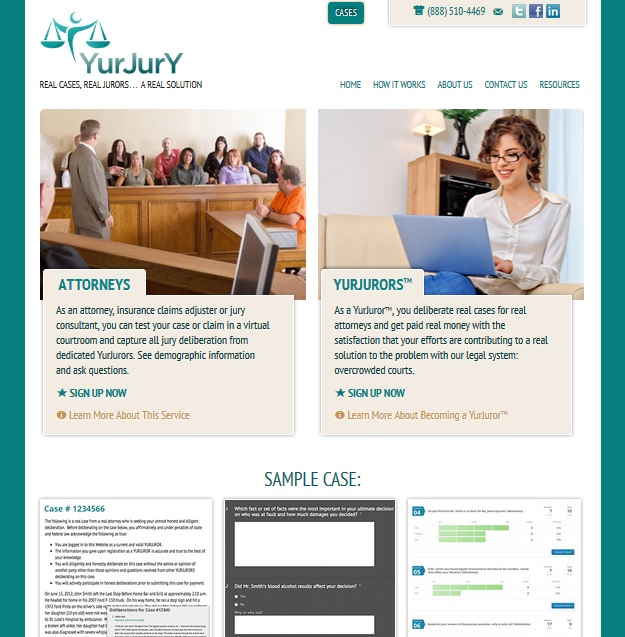When you set up a WordPress site, you have a lot of options. One of the first decisions you need to make is whether to have your blog on your homepage.
If your website is a blog, like Josepha’s, shown below, then of course you want your blog on the homepage. Go to Settings> Reading in your dashboard and tell WordPress to send your posts to the front page.
This is easy. The first setting on the Reading Settings page is “The front page displays…” and “your latest posts” is the first option. See a screenshot at the bottom of this post.
If your website is built in WordPress but doesn’t include a blog, then of course you don’t want to display your latest posts.
In that case, as with the YurJury site shown here, you’ll choose “a static page” in the front page settings on the Reading Settings page. The front page which you see here has no dynamic elements, and it is, from the point of view of a visitors, just like the homepage of a site built in traditional HTML and CSS.
So far this is a simple decision. If your site is a blog, like the one shown below, put the latest posts on the front page:

If there is no blog, as with the professional site shown below, build a static page and choose that page in the Reading Settings:
But what if you want to build a website that includes a blog, but which is also a lead generating site for your business or an e-commerce site or a brand awareness building site for your products? Then you could go either way.
The benefits of a static page
- You can optimize static content to communicate well with search engines, making it easier for potential customers to find you.
- You can make it very clear what your website is about — to human visitors and to search engines — even if you like to blog about a lot of different subjects.
- You can have a strong call to action without having it look like an ad on a blog.
- A static page may have a more authoritative look.
It doesn’t have to be either/or. Here you see the home page above the fold at a website we built for a local outdoor gear store:

This page has the phone number, address, hours, brands carried — all the important things you want to know about a brick and mortar store. It also has enough text to communicate clearly with search engines, and that has made a big difference for the store.
Scroll down, and you’ll see a couple of the newest blog posts.

This is how we usually build websites. We like to provide a strong static page, but then to bring the blog feed to the front page:

For the website shown below, there is a static page, but the main text is a post. We built the site with a post category that is designed just to bring content into the homepage. The blog does not feed to the homepage — just the special category does. This allows the company to change their homepage text easily:

The news site shown below also brings posts to the homepage with post categories. It has some static content, and also uses pods for some content:

With so much flexibility possible with static WordPress pages, when would you not want a static page for your homepage?
- If your business model is still quite fluid. For example, if you’re a blogger and you intend to monetize your blog in the future but don’t yet know how you want to do so, you might want the flexibility of having your blog as the main content of your site, with your static content in a sidebar widget. Once you’ve decided what you want to do, you can build a static home page.
- If you use a pre-made theme which doesn’t lend itself to a well-designed static page. We build custom WordPress websites, so the homepage is hand-coded like a traditional website home page, but many ready-made themes will look like a blog even if you designate a static page. Your homepage can then just look like a blog that never gets updated.
If you choose to create a static homepage and you still want a blog, you will need to make and publish an empty page to serve as your blog. Then you must tell WordPress on the Reading Settings page which page you want to use as your blog page. See the screenshot below for a typical way of setting up a static page on the Reading Settings page:




Leave a Reply